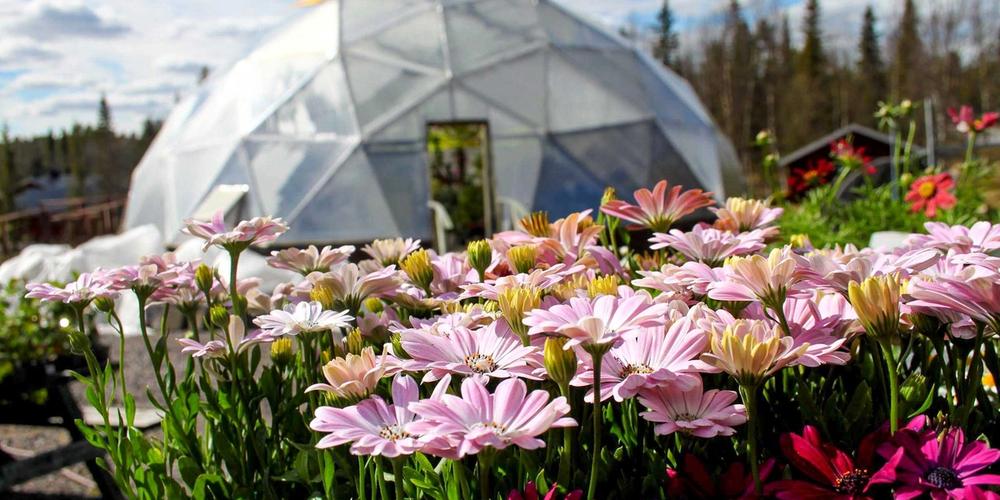
Happy National Pollinator Week!
While you may think of your Growing Dome as an oasis of solitude, your garden isn’t entirely ‘living in a bubble.’ Pollinators like bees, wasps, butterflies, moths, and flies may still find their way into your greenhouse. For many of our dome owners, the Growing Dome is the crown jewel in the middle of a larger ecosystem, surrounded by raised beds, planters, or cultivated fields. Pollinator Week is a time to celebrate the vital role these insects play in our environment. It’s also an opportunity to reflect on our practices to be sure we’re doing our best to help them thrive.




What is Pollinator Week?
Sixteen years ago, the U.S. Senate unanimously voted to designate a week in June to address the urgent issue of declining pollinator populations. Now, it’s a global movement to pledge to protect the critters who pollinate our flowers and ultimately produce our food like birds, bees, bats, and beetles.




How can I help?



To celebrate Pollinator Week, grow a pollinator garden or build a house for native bees. In this article from Audubon Rockies, you can watch our local Community Naturalist, Keith Bruno, as he explains the difference between honeybees and mason bees. He’ll also walk you through building a mason bee house. You can still see these bee houses at the Geothermal Greenhouse Partnership, which features our 42’ Growing Domes.

Become a citizen scientist. Join organizations like Bumble Bee Watch where you can take a photo, upload it to their database, and ID your species, which an expert will verify. You may even help identify and protect a threatened species with your watchful eye.

Going Beyond Pollinator Week—What Growing Spaces is Doing to Support Pollinators
Two of our core values include Mentoring Environmental Responsibility and Living in Balance. We strive to live in an environmentally responsible way and share our knowledge to foster accountability, making the world better one gardener at a time.
Pollinator Window
We are currently researching and developing a Pollinator Window Option for our Growing Domes. This feature would allow pollinators like bees and butterflies to more easily move in and out of the greenhouse. Read more about Attracting Bees to Your Greenhouse.



Organic Gardening Practices
Growing Spaces is already committed to using Organic Pest Control methods in all of our greenhouses and gardens. Just because it is an organic control method, doesn’t mean it won’t jeopardize pollinators. Carefully weigh the risks and rewards. Using traps, and things like diatomaceous earth or neem oil are not selective and work to kill ALL insects. One of our preferred practices is using beneficial insects. Ladybugs are selective and not only feast on aphids, but they can be active pollinators as well.

We hope this has 🐝BEE(n) informative, and gave you some new ideas on ways to support pollinators in your garden and celebrate Pollinator Week.
Share This
Having lived in Pagosa since 2001, I’m very familiar with Growing Spaces and have been interested in their geodesic dome design since we moved here. I got my start in gardening in the challenging conditions that Pagosa has to offer. In a previous role with the Southwest Land Alliance, I was able to contribute my graphic design services to the Geothermal Greenhouse Project, which features these unique domes. I’ve worn a lot of hats over the years and am excited now to be joining the marketing team and supporting the Growing Spaces community.
Subscribe to Our Newsletter
Join our community to stay up to date

Featured Categories
Downloads

Please Subscribe to Our Newsletter! :-)
Please Join our community to stay up to date :-)


